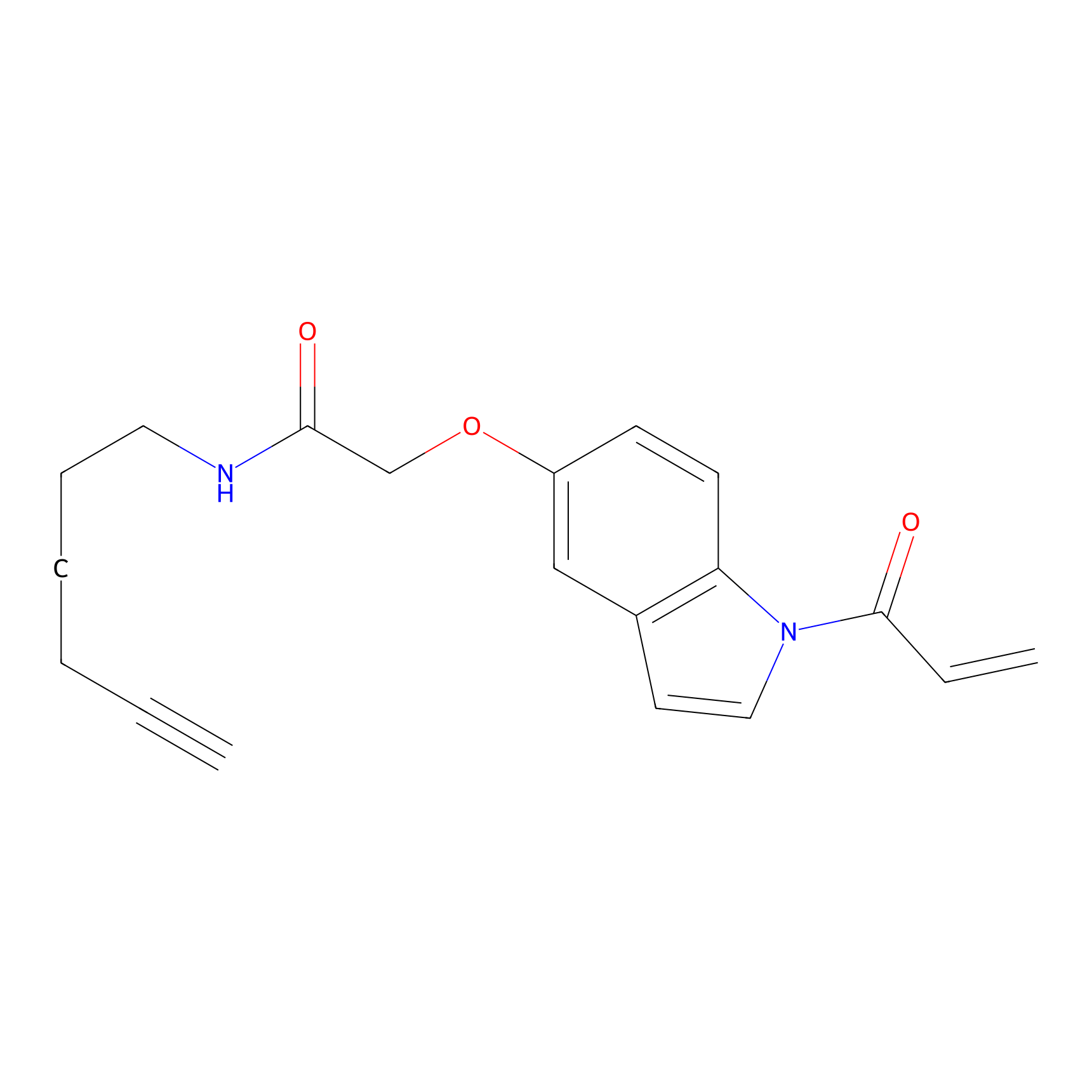Details of the Target
General Information of Target
| Target ID | LDTP07038 | |||||
|---|---|---|---|---|---|---|
| Target Name | WD repeat domain phosphoinositide-interacting protein 1 (WIPI1) | |||||
| Gene Name | WIPI1 | |||||
| Gene ID | 55062 | |||||
| Synonyms |
WIPI49; WD repeat domain phosphoinositide-interacting protein 1; WIPI-1; Atg18 protein homolog; WD40 repeat protein interacting with phosphoinositides of 49 kDa; WIPI 49 kDa |
|||||
| 3D Structure | ||||||
| Sequence |
MEAEAADAPPGGVESALSCFSFNQDCTSLATGTKAGYKLFSLSSVEQLDQVHGSNEIPDV
YIVERLFSSSLVVVVSHTKPRQMNVYHFKKGTEICNYSYSSNILSIRLNRQRLLVCLEES IYIHNIKDMKLLKTLLDIPANPTGLCALSINHSNSYLAYPGSLTSGEIVLYDGNSLKTVC TIAAHEGTLAAITFNASGSKLASASEKGTVIRVFSVPDGQKLYEFRRGMKRYVTISSLVF SMDSQFLCASSNTETVHIFKLEQVTNSRPEEPSTWSGYMGKMFMAATNYLPTQVSDMMHQ DRAFATARLNFSGQRNICTLSTIQKLPRLLVASSSGHLYMYNLDPQDGGECVLIKTHSLL GSGTTEENKENDLRPSLPQSYAATVARPSASSASTVPGYSEDGGALRGEVIPEHEFATGP VCLDDENEFPPIILCRGNQKGKTKQS |
|||||
| Target Bioclass |
Other
|
|||||
| Family |
WD repeat PROPPIN family
|
|||||
| Subcellular location |
Golgi apparatus, trans-Golgi network
|
|||||
| Function |
Component of the autophagy machinery that controls the major intracellular degradation process by which cytoplasmic materials are packaged into autophagosomes and delivered to lysosomes for degradation. Plays an important role in starvation- and calcium-mediated autophagy, as well as in mitophagy. Functions downstream of the ULK1 and PI3-kinases that produce phosphatidylinositol 3-phosphate (PtdIns3P) on membranes of the endoplasmic reticulum once activated. Binds phosphatidylinositol 3-phosphate (PtdIns3P), and maybe other phosphoinositides including PtdIns3,5P2 and PtdIns5P, and is recruited to phagophore assembly sites at the endoplasmic reticulum membranes. There, it assists WIPI2 in the recruitment of ATG12-ATG5-ATG16L1, a complex that directly controls the elongation of the nascent autophagosomal membrane. Together with WDR45/WIPI4, promotes ATG2 (ATG2A or ATG2B)-mediated lipid transfer by enhancing ATG2-association with phosphatidylinositol 3-monophosphate (PI3P)-containing membranes. Involved in xenophagy of Staphylococcus aureus. Invading S.aureus cells become entrapped in autophagosome-like WIPI1 positive vesicles targeted for lysosomal degradation. Also plays a distinct role in controlling the transcription of melanogenic enzymes and melanosome maturation, a process that is distinct from starvation-induced autophagy. May also regulate the trafficking of proteins involved in the mannose-6-phosphate receptor (MPR) recycling pathway.
|
|||||
| Uniprot ID | ||||||
| Ensemble ID | ||||||
| HGNC ID | ||||||
Target Site Mutations in Different Cell Lines
Probe(s) Labeling This Target
ABPP Probe
| Probe name | Structure | Binding Site(Ratio) | Interaction ID | Ref | |
|---|---|---|---|---|---|
|
STPyne Probe Info |
 |
K221(5.00) | LDD0277 | [1] | |
|
DBIA Probe Info |
 |
C318(3.39) | LDD3310 | [2] | |
|
NAIA_5 Probe Info |
 |
N.A. | LDD2223 | [3] | |
Competitor(s) Related to This Target
| Competitor ID | Name | Cell line | Binding Site(Ratio) | Interaction ID | Ref |
|---|---|---|---|---|---|
| LDCM0281 | AC21 | HEK-293T | C95(0.97) | LDD1520 | [4] |
| LDCM0289 | AC29 | HEK-293T | C95(0.97) | LDD1528 | [4] |
| LDCM0298 | AC37 | HEK-293T | C95(1.10) | LDD1537 | [4] |
| LDCM0307 | AC45 | HEK-293T | C95(1.04) | LDD1546 | [4] |
| LDCM0312 | AC5 | HEK-293T | C95(1.05) | LDD1551 | [4] |
| LDCM0316 | AC53 | HEK-293T | C95(1.09) | LDD1555 | [4] |
| LDCM0325 | AC61 | HEK-293T | C95(1.09) | LDD1564 | [4] |
| LDCM0248 | AKOS034007472 | HEK-293T | C95(1.04) | LDD1511 | [4] |
| LDCM0020 | ARS-1620 | HCC44 | C422(0.82); C435(0.82) | LDD2171 | [5] |
| LDCM0409 | CL21 | HEK-293T | C95(0.97) | LDD1613 | [4] |
| LDCM0422 | CL33 | HEK-293T | C95(0.98) | LDD1626 | [4] |
| LDCM0435 | CL45 | HEK-293T | C95(1.05) | LDD1639 | [4] |
| LDCM0448 | CL57 | HEK-293T | C95(1.19) | LDD1651 | [4] |
| LDCM0461 | CL69 | HEK-293T | C95(1.05) | LDD1664 | [4] |
| LDCM0475 | CL81 | HEK-293T | C95(1.07) | LDD1678 | [4] |
| LDCM0484 | CL9 | HEK-293T | C95(1.06) | LDD1687 | [4] |
| LDCM0488 | CL93 | HEK-293T | C95(1.07) | LDD1691 | [4] |
| LDCM0022 | KB02 | A101D | C95(1.79); C318(2.24) | LDD2250 | [2] |
| LDCM0023 | KB03 | A101D | C95(2.11) | LDD2667 | [2] |
| LDCM0024 | KB05 | COLO792 | C318(3.39) | LDD3310 | [2] |
| LDCM0021 | THZ1 | HCT 116 | C422(0.82); C435(0.82) | LDD2173 | [5] |
References
